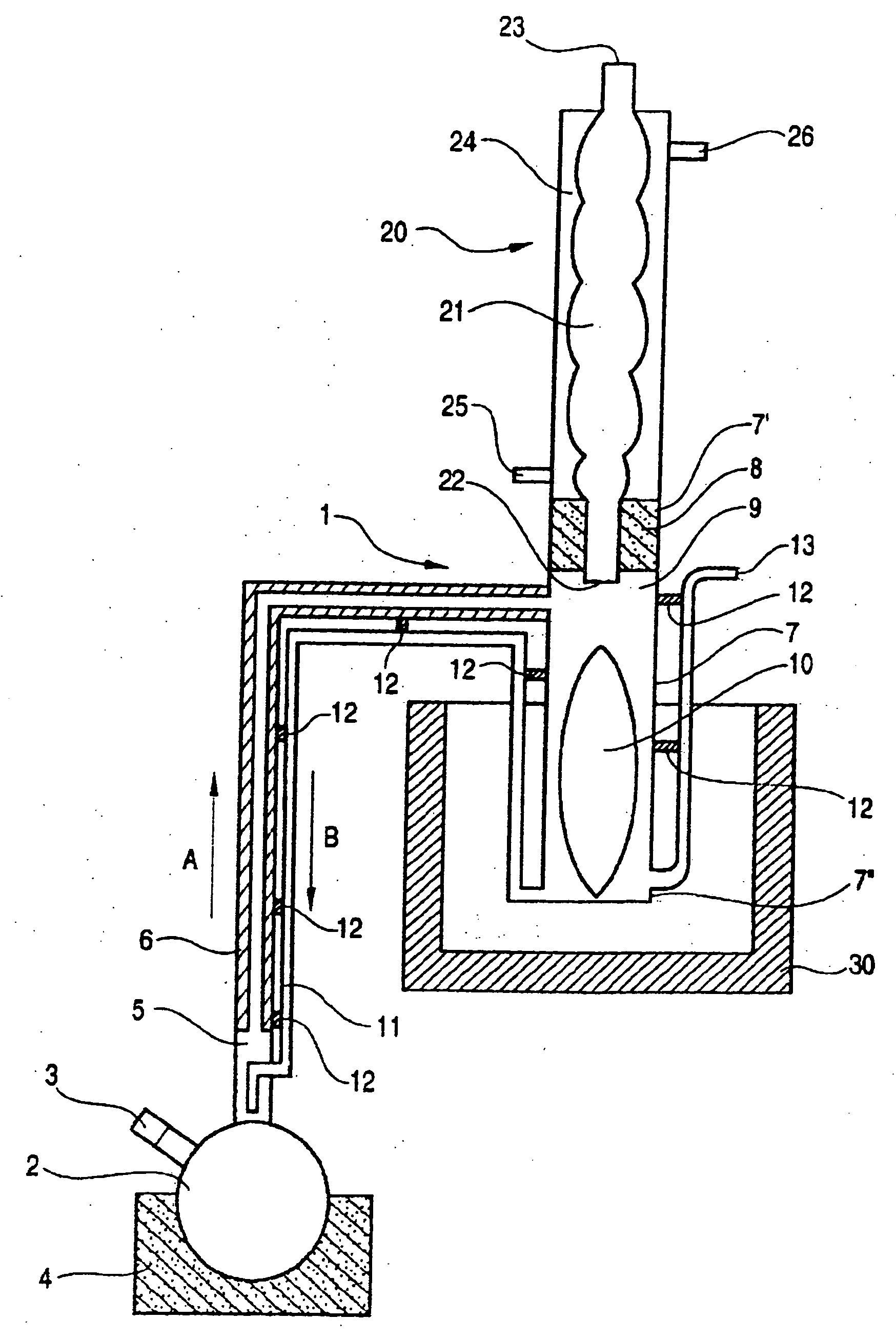Ultrasonic reflux system for one-step purification of carbon nanostructures
- Summary
- Abstract
- Description
- Claims
- Application Information
AI Technical Summary
Benefits of technology
Problems solved by technology
Method used
Image
Examples
Embodiment Construction
[0017] The present invention generally relates to reflux systems and methods for purifying carbon nanostructures.
[0018] The reflux system of the present invention in an embodiment allows carbon nanostructures to be purified in one step by filtration, extraction, or both, carried out at ambient temperature. That is, soot containing the desired carbon nanostructures as well as unwanted byproducts is put into a filter, is placed into the reflux system and, through various processes performed in the reflux system, the desired carbon nanostructures are removed from the reflux system. Therefore, neither the soot, nor any intermediate products, need be removed from the reflux system until the purification process is complete; the entire purification process takes place within the reflux system and takes place at ambient temperature. The reflux system includes an extractor 1, a condenser 20, and an energy applicator 30.
[0019] The extractor 1 includes a solvent flask 2, a thermal mantle 4,...
PUM
 Login to View More
Login to View More Abstract
Description
Claims
Application Information
 Login to View More
Login to View More - R&D
- Intellectual Property
- Life Sciences
- Materials
- Tech Scout
- Unparalleled Data Quality
- Higher Quality Content
- 60% Fewer Hallucinations
Browse by: Latest US Patents, China's latest patents, Technical Efficacy Thesaurus, Application Domain, Technology Topic, Popular Technical Reports.
© 2025 PatSnap. All rights reserved.Legal|Privacy policy|Modern Slavery Act Transparency Statement|Sitemap|About US| Contact US: help@patsnap.com


